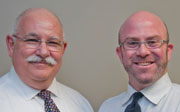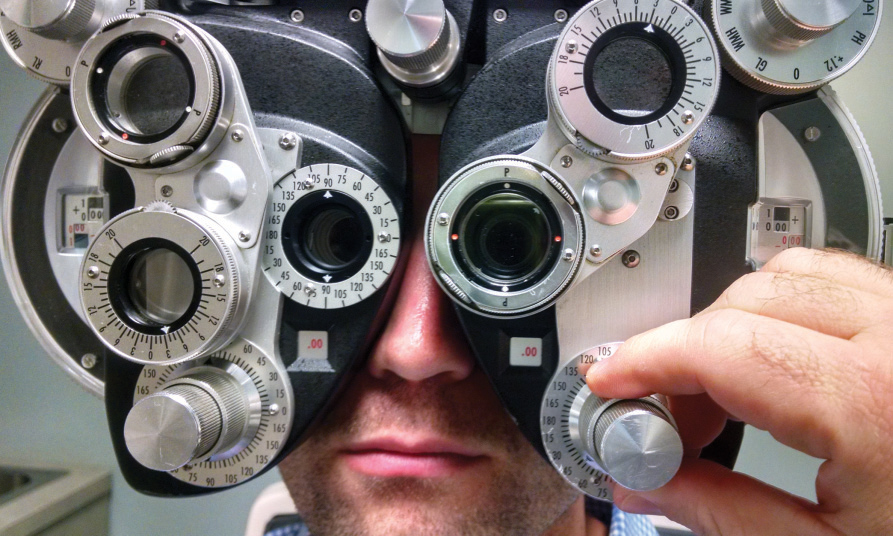 |
Optometric educators may have noticed a disturbing trend developing. It seems optometry students are under the misconception that a single, ideal refraction—the refraction, let’s call it—exists for each individual, and that the goal of what we teach students is to find it. Once found, the refraction can be prescribed with impunity. If the patient has trouble with their glasses, it is assumed, the refraction could not be blamed.
How many times have we heard, “These are the wrong glasses” or “Who thought this prescription would be right for you?” In fact, refractive procedures should not spit out a single ‘correct’ number, but rather, a range of lenses. The key is recognizing what to do with that range.
 |
| Here’s a tip for matching a patient to a prescription: talk to them. You’re required to do more than simply sit them in front of a phoropter and jot down results. |
The Skeffington Analytical Sequence
One early method of teaching optometrists, the Skeffington Analytical Sequence, has two key endpoints of refraction—7 and 7a. Today, these endpoints are known (at least at Southern College of Optometry) as the “binocular balance” and the “manifest,” though many call the second endpoint the “best visual acuity (BVA).” Their definitions are:
- “The 7,” or binocular balance: The most plus/least minus to the first good 20/20.
- “The 7A,” or BVA: Change from the first endpoint derived by reducing plus or adding minus binocularly to the set of lenses through which visual acuity is optimized.
Why then, if every optometrist is trained to get these two endpoints, does the myth of the refraction persist? Breaking this habit may be a challenge, but take a look at the benefits of taking the time to find the two endpoints and to then discuss options with patients.
Reaching the Endpoints
The binocular balance is the endpoint most are familiar with. After retinoscopy, the optometrist finds the proper level of accommodative stimulation to move to the astigmatism testing. Then, the actual binocular balance is performed. Assume the patient has equal visual acuities through both eyes and no pathology or amblyopia.
A well-performed binocular balance is an OD’s best tool to make sure that, when we do prescribe, we know the maximum plus at distance before seeing lens blur, as well as the minimum minus to restore a good 20/20.
In searching for the other endpoint—the BVA— many optometry students change the chart to 20/15 and go one or two clicks binocularly, reducing plus or adding minus, to see if now the patient can see the 20/15 line. Most students have yet to develop a standard system by which they come this other endpoint. That is to be expected, as they are still forming a refraction routine. However, we often embed many of the procedural schemes we learn early, and they may be hard to change later.
Independent Study
Years ago, a group of ODs—Dr. Harris included—participated in a study group that decided to investigate the usefulness of questions they asked patients in finding the second endpoint, BVA. They asked:
- Which is blacker?
- Which is clearer?
- Which is bolder?
- Which is blackest and clearest?
- Which of these looks larger?
During their monthly meetings, the group discussed the reactions they got and how helpful or not the question was, in getting to a second endpoint that was meaningful and stable.
In the end, most patients responded positively to the last question. The 20/20 line was kept in place and the patients were asked to compare two options based on size. Interestingly, this goes against what we all know about optics. How could less plus or more minus, added binocularly, cause the perception of the letters to be larger? Most likely, it was a perceptual response, but we may never know exactly. The key point was, we kept taking plus away or adding minus until the person noticed a slight reduction in size or the size of the letters stopped getting larger. Then, we tested visual acuity through this “largest” (large only in the size perception of the patient of the same 20/20 letters they were looking at) lens and many could now get to 20/10 or even better.
Often, this second endpoint (7a, BVA, manifest) was 0.50D to 0.75D less plus or more minus than the binocular balance. In some instances, the first click caused a shrinkage of the size of the letters and in those instances, only one endpoint was recorded. This was rare.
From a Certain Point of View
“All prescribing is a negotiation between the doctor and the patient,” Gregory Kitchener, OD, once said. So, having the range sets the stage for negotiation to begin. Neither binocular balance nor this second endpoint is the prescription. The prescription results from the needs of the patient, both short-term (e.g., to see clearly, to see more efficiently or to reduce asthenopia) and long-term (e.g., to reduce dependency on eyewear for certain tasks) which were expressed by the patient to the doctor, combined with the optometrist’s knowledge.
As an example, assume the following range found on two different 14-year-olds. The binocular balance is -1.50D and the BVA is -2.25D. Child #1 plays basketball and is an excellent player hoping to make the varsity team, and together we find that she shoots much more accurately with the full -2.25D. Child #2 is rather bookish and both parents are well above -6.00D in their corrections. Child #2 has been treated before with vision therapy, has been in a bifocal since the third grade and been rather stable in her myopia progression. So, child #1—our basketball player—gets fit with the full -2.25D in contact lenses for full-time wear and might be given some plus for near for studying and test taking. Child #2 gets the -1.50D with an add determined by many factors, with her stress-point retinoscopy being the key factor, giving us a +0.75D add in a bifocal for full-time wear to continue stabilization.
So much of selecting a final set of numbers depends a lot on various frames of references and points of view. One of the keys in working with guidelines or directives is to know when to follow them—and when to let them go.

